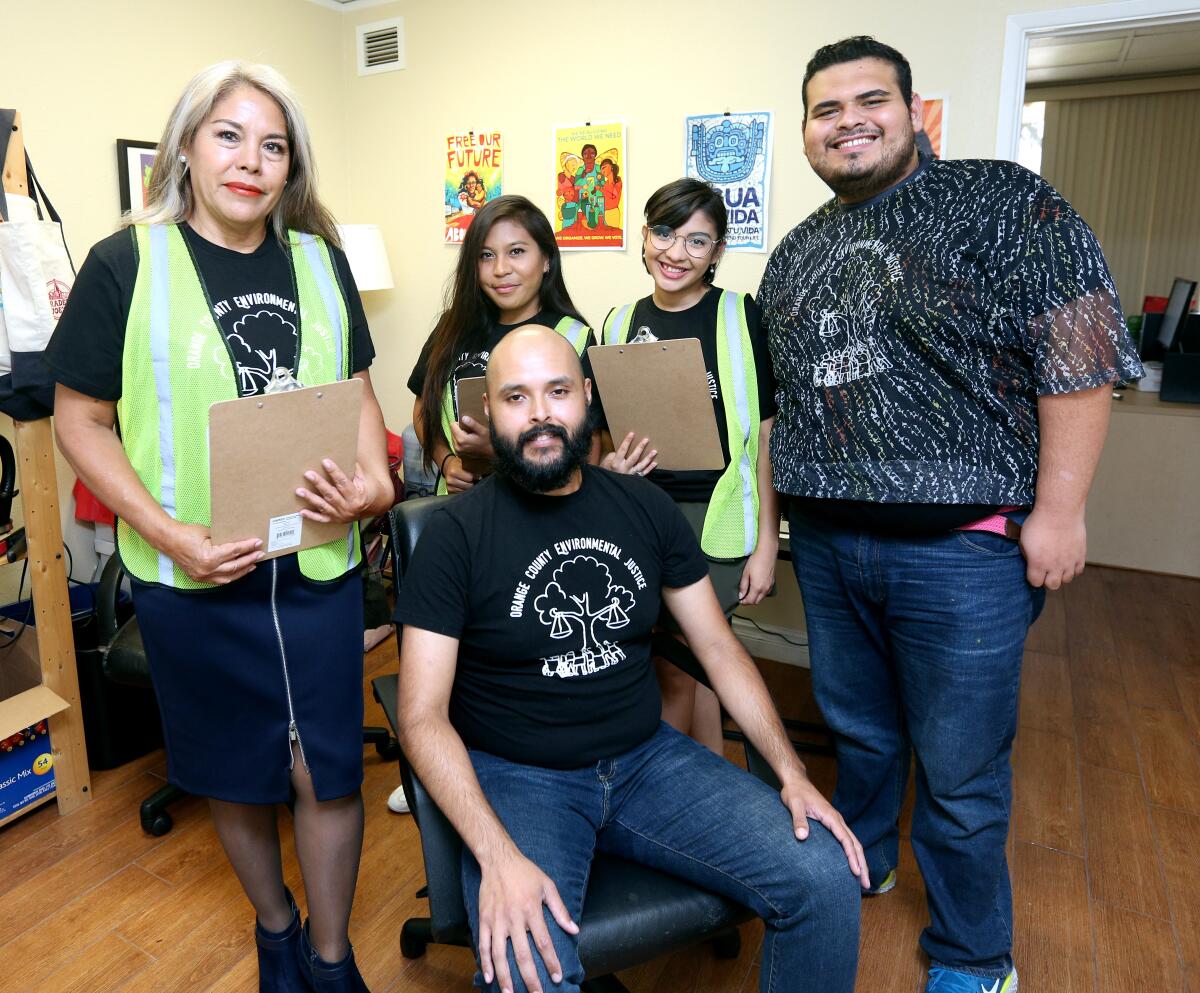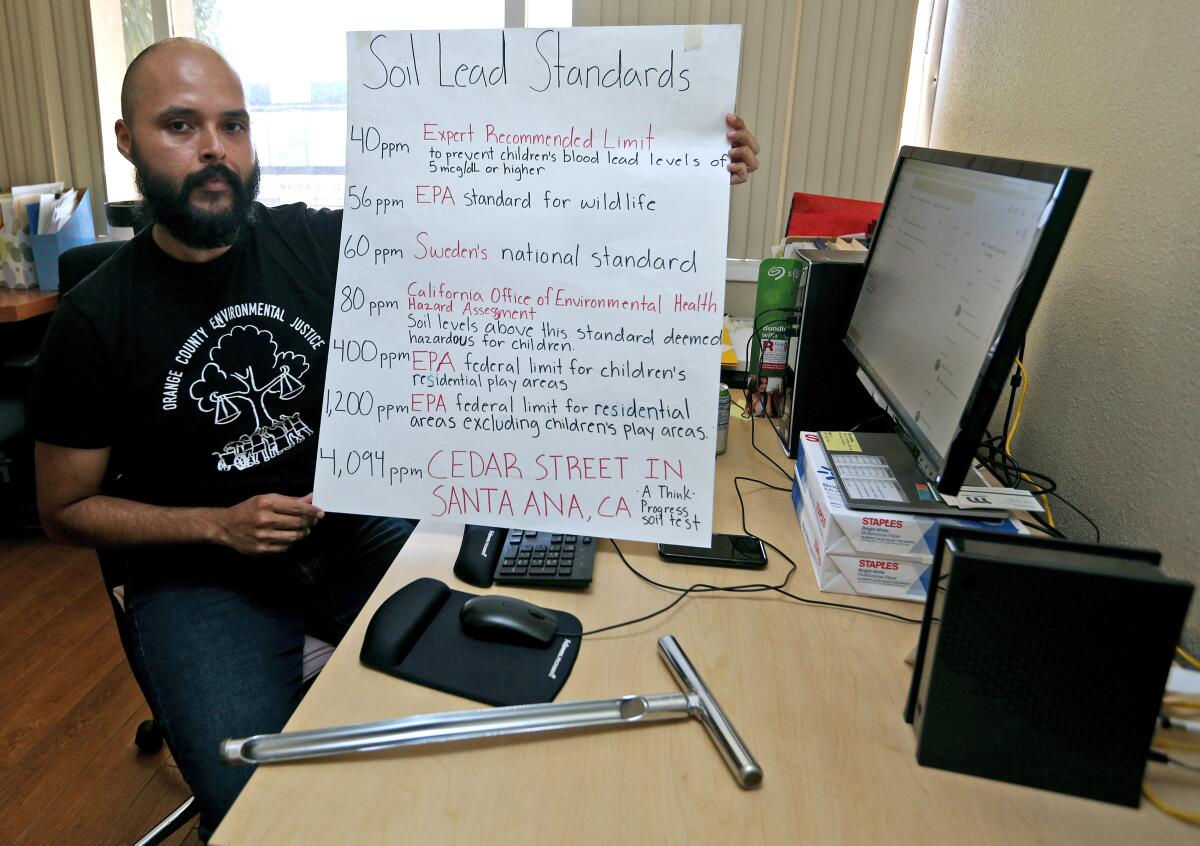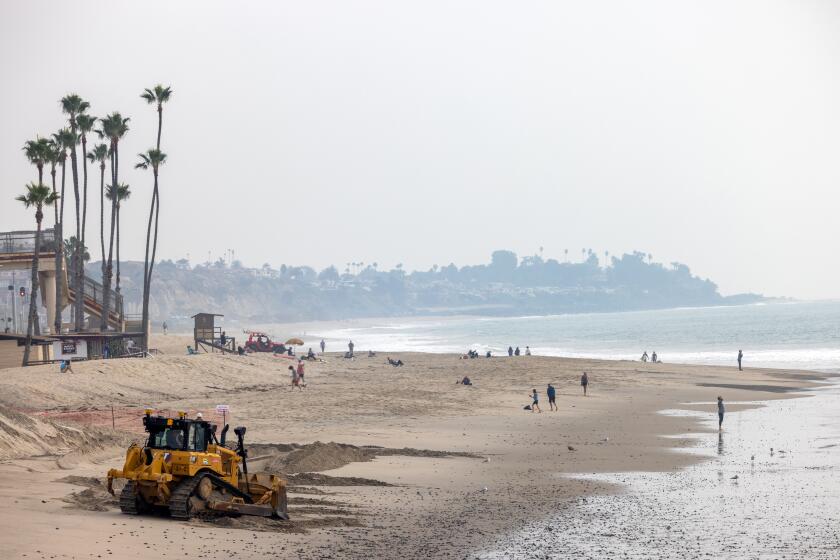Toxic soil in Santa Ana? Community groups are working with UC Irvine to find out

Enrique Valencia believes there are poisons in the soil in Santa Ana which are adversely affecting poorer neighborhoods.
His organization, Orange County Environmental Justice, has been working with UC Irvine and other community members for the last two years to determine whether lead levels in Santa Ana soils are high enough to negatively affect residents.
Last summer, the coalition went around the community and gathered more than 1,500 soil samples from more than 500 locations.
So far, the group has had about two-thirds of the samples analyzed by a laboratory at UC Riverside.
Valencia said the preliminary data taken from soil around residences has shown lead concentrations ranging from 11.4 to 2,687 parts per million.
The California Office of Environmental Health Hazard Assessment considers anything above 80 ppm in a residential area a hazard to health.
“It’s quite alarming,” Valencia said.
Researchers were not comfortable providing the locations of specific neighborhoods that are most affected until the final report is released. The rest of the data is expected to be completed by the end of this month. The coalition is hoping to have a formal report ready by the fall.

The research started in 2017, when Valencia joined forces with the Santa Ana-based community group Jóvenes Cultivando Cambios and Alana LeBron, a UC Irvine assistant professor of public health and Chicano/Latino studies.
The impetus was a detailed investigation of the lead crisis in Santa Ana by former ThinkProgress investigative reporter Yvette Cabrera.
For the investigative series, Cabrera found hazardous lead levels after testing more than 1,000 soil samples from homes and other public areas around Santa Ana.
Valencia’s coalition decided to expand on her work.
“We see this as part of the process of building a movement,” LeBron said. “Our goal is a lead-free Santa Ana.”
LeBron, whose work focuses on how social and economic inequities can lead to specific populations being more prone to disease and illness, said the research will be conducted in phases.
The first phase is to analyze the lead levels in the soil. The next step will focus on determining the sources of the lead. The final leg of the research will answer how much of the lead identified in the soils are bioaccessible and therefore harmful to humans.

“We think of this research as a book with many chapters,” LeBron said.
LeBron said lead likely found its way into soil from historically leaded gasoline and paint.
The federal government banned consumer uses of lead-containing paint in 1978. But, LeBron said census data shows the majority of houses in Santa Ana were built prior to that ban.
“Compared to the rest of the county, Santa Ana housing stock is significantly older and much more likely to have lead paint,” LeBron said.
LeBron said poorer neighborhoods can be more at risk for a number of reasons, including that residents may not have access to the resources to remediate the issue.
“Communities of color and low-income residents get funneled into housing markets that are not maintained or remediated,” LeBron said.
Once conclusions are drawn by the coalition, the next step will be how best to educate the public.
Members of the coalition have already started going door-to-door to notify residents of problematic lead levels found near their homes. LeBron said they will also organize community forums for the fall, once the report is ready.
Jóvenes Cultivando Cambios, which is comprised of mostly youth and young adults, is currently developing a documentary that will be screened to the community and a comic book that can be used in schools to educate local children about the dangers of lead in the community.
Jóvenes Cultivando Cambios focuses on children due to the belief that youth are more at-risk for lead poisoning. In her series, Cabrera detailed how exposure to lead can have lasting effects on developing minds.
An Amherst College research paper cited by Cabrera states that consequences of early childhood lead exposure include “an unfolding series of adverse behavioral outcomes: behavior problems as a child, pregnancy and aggression as a teen, and criminal behavior as a young adult.”
“We need materials like the comic book and the video to help spread the word because lead is a topic that isn’t really talked about,” said Miriam Lopez, a member of Jóvenes Cultivando Cambios. “It’s affecting a lot of students in Santa Ana.”
All the latest on Orange County from Orange County.
Get our free TimesOC newsletter.
You may occasionally receive promotional content from the Daily Pilot.




